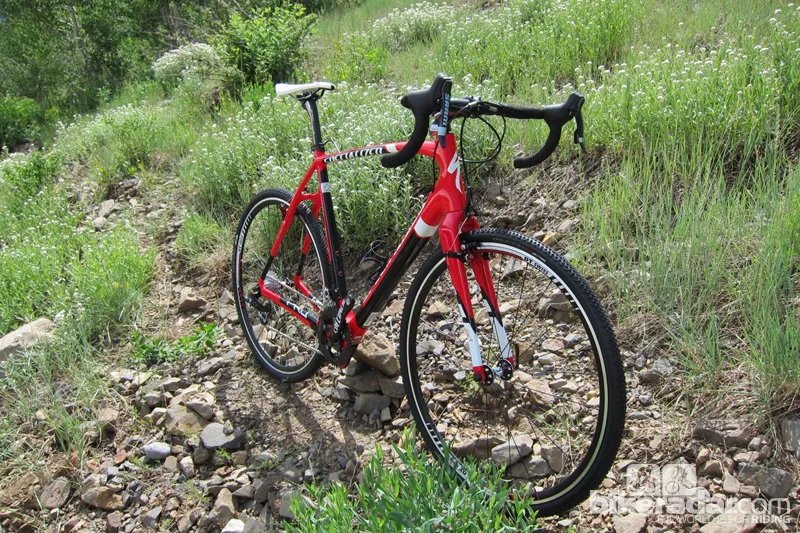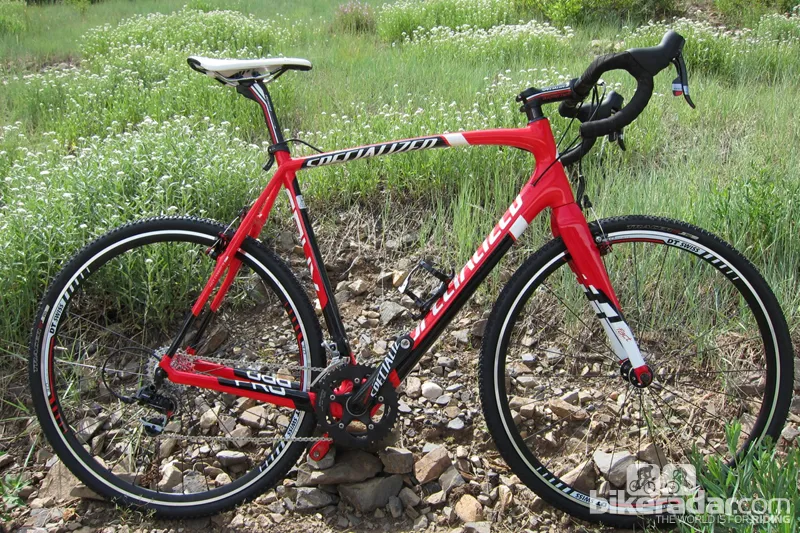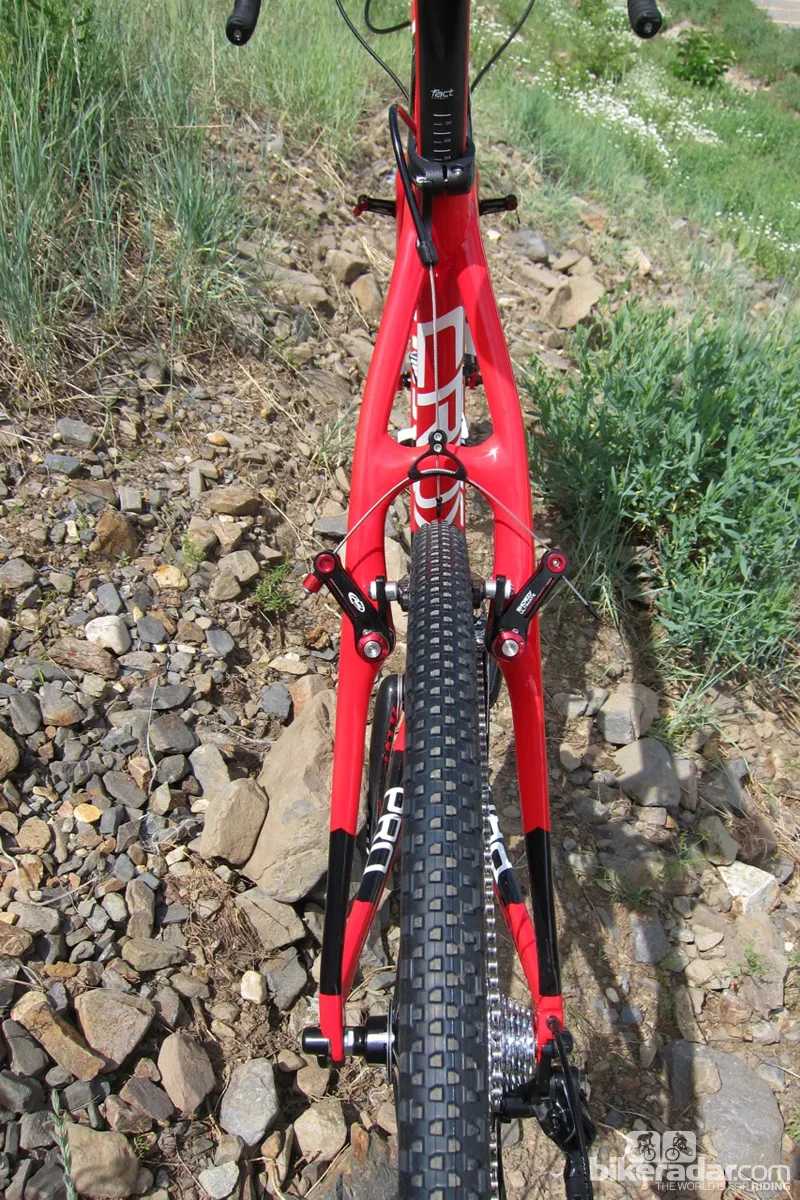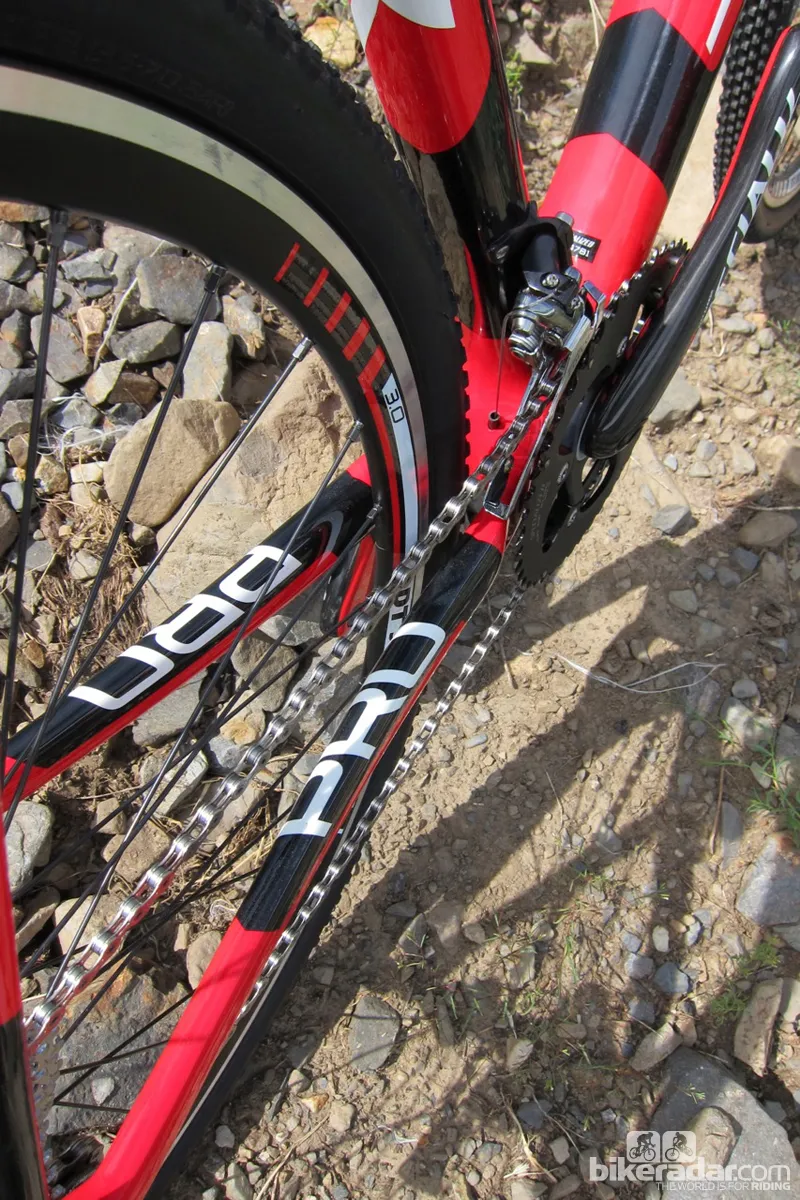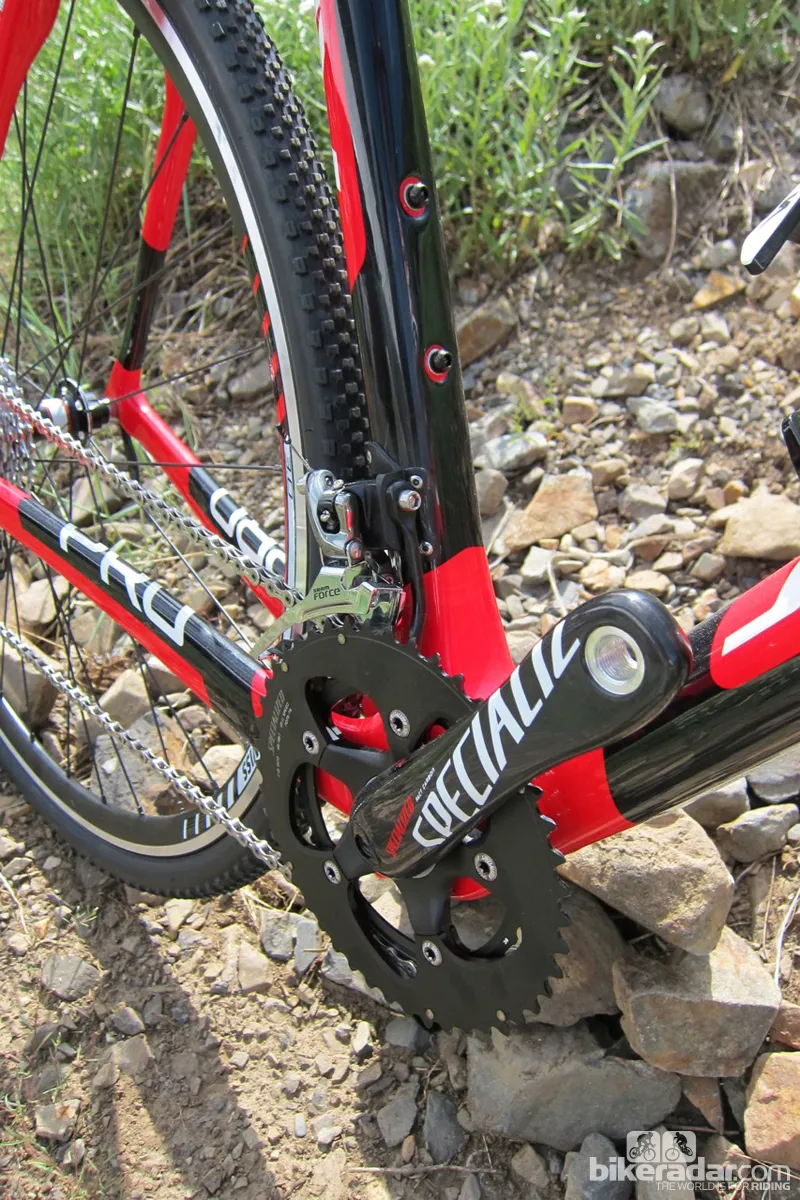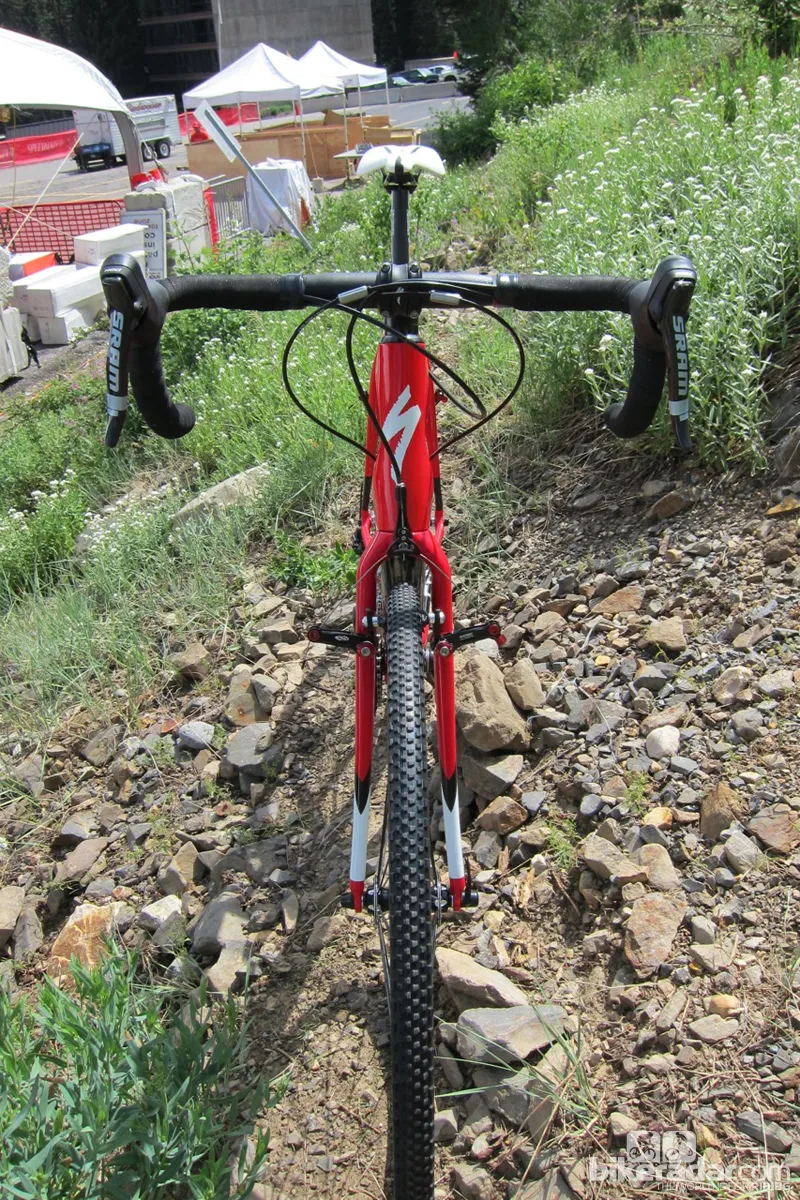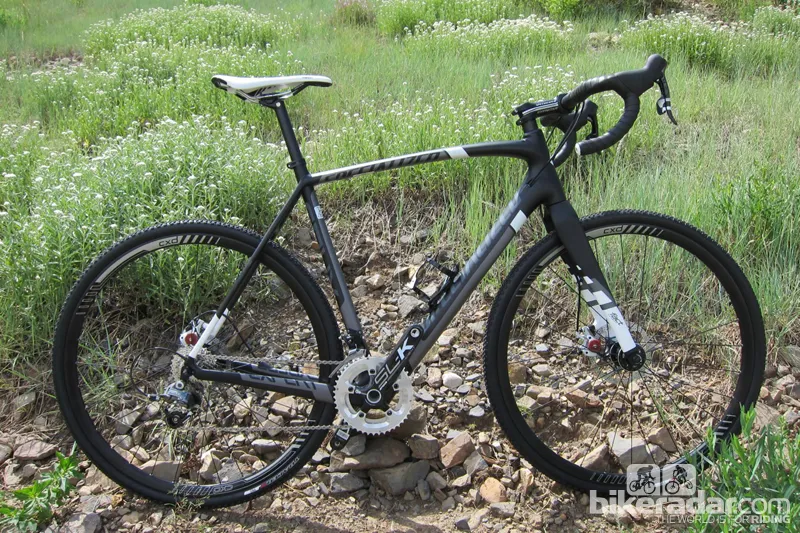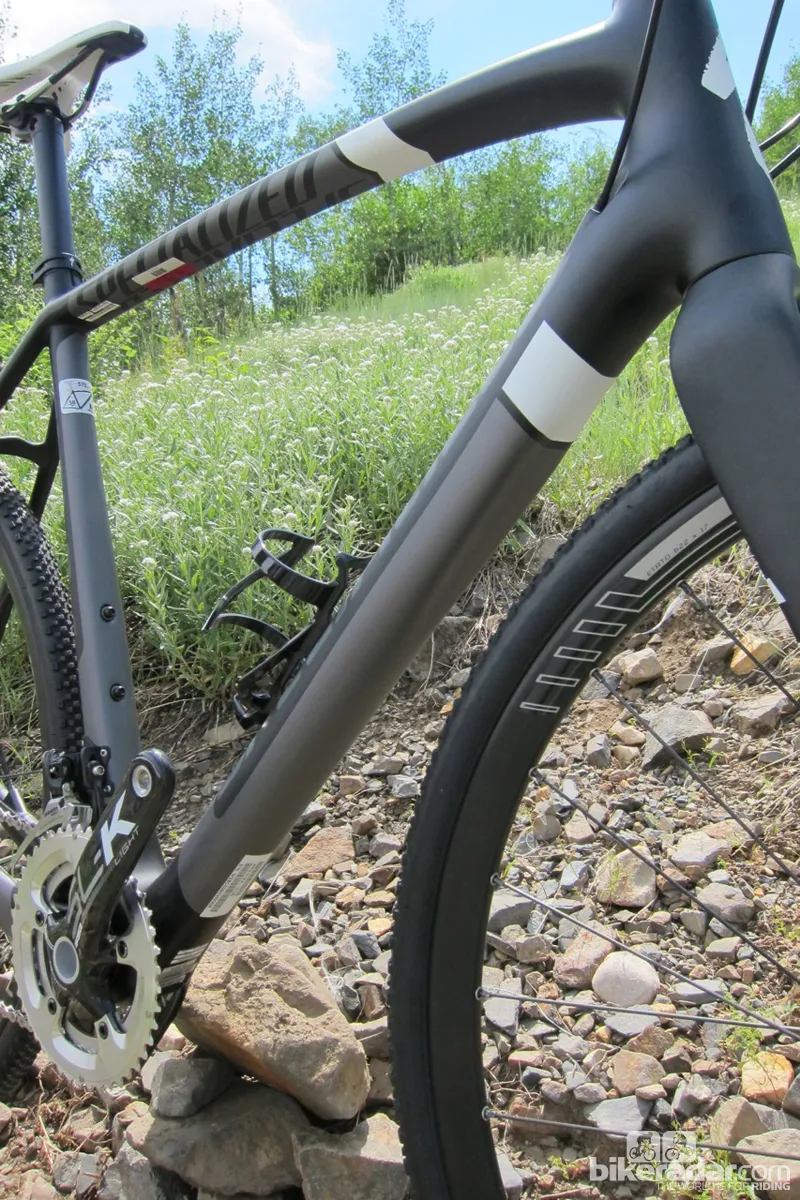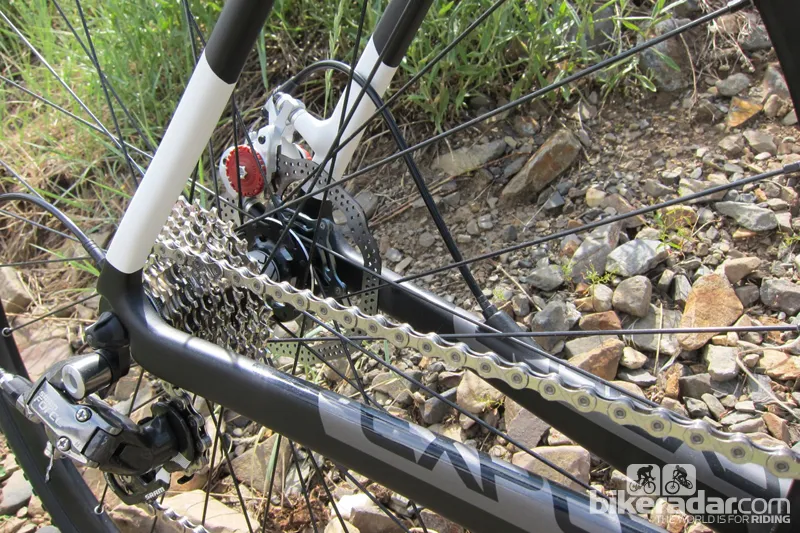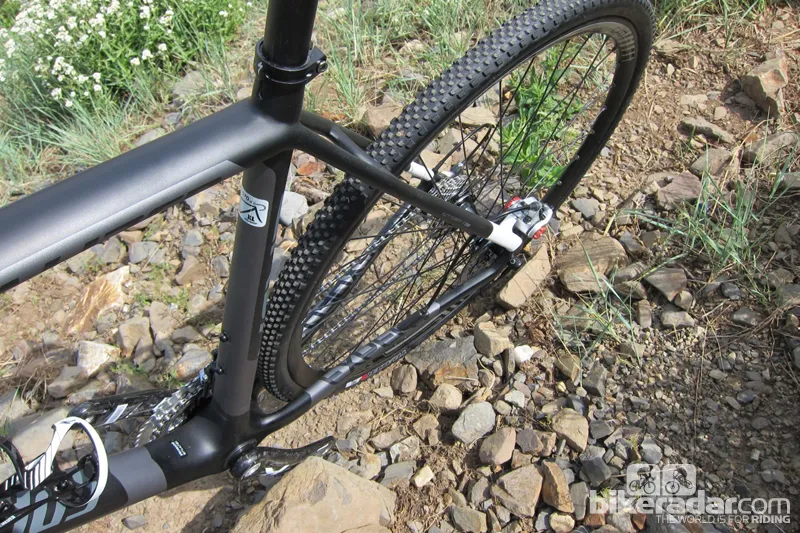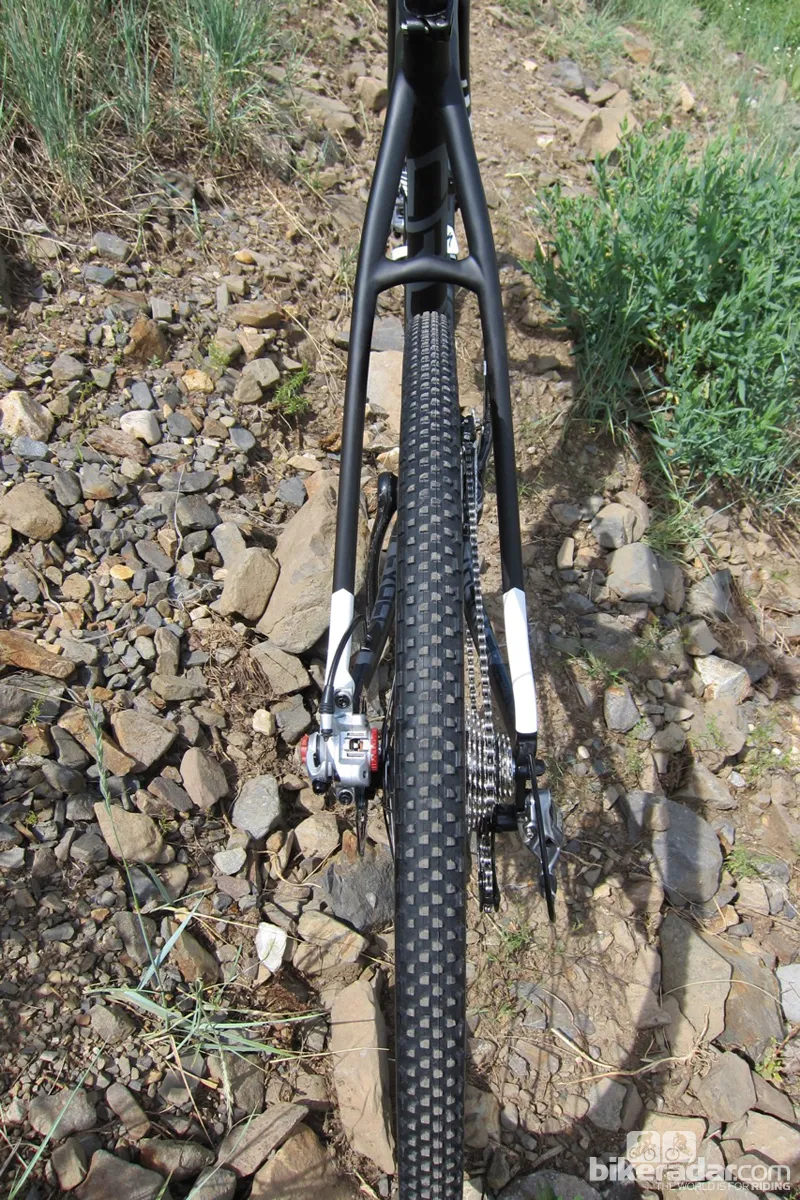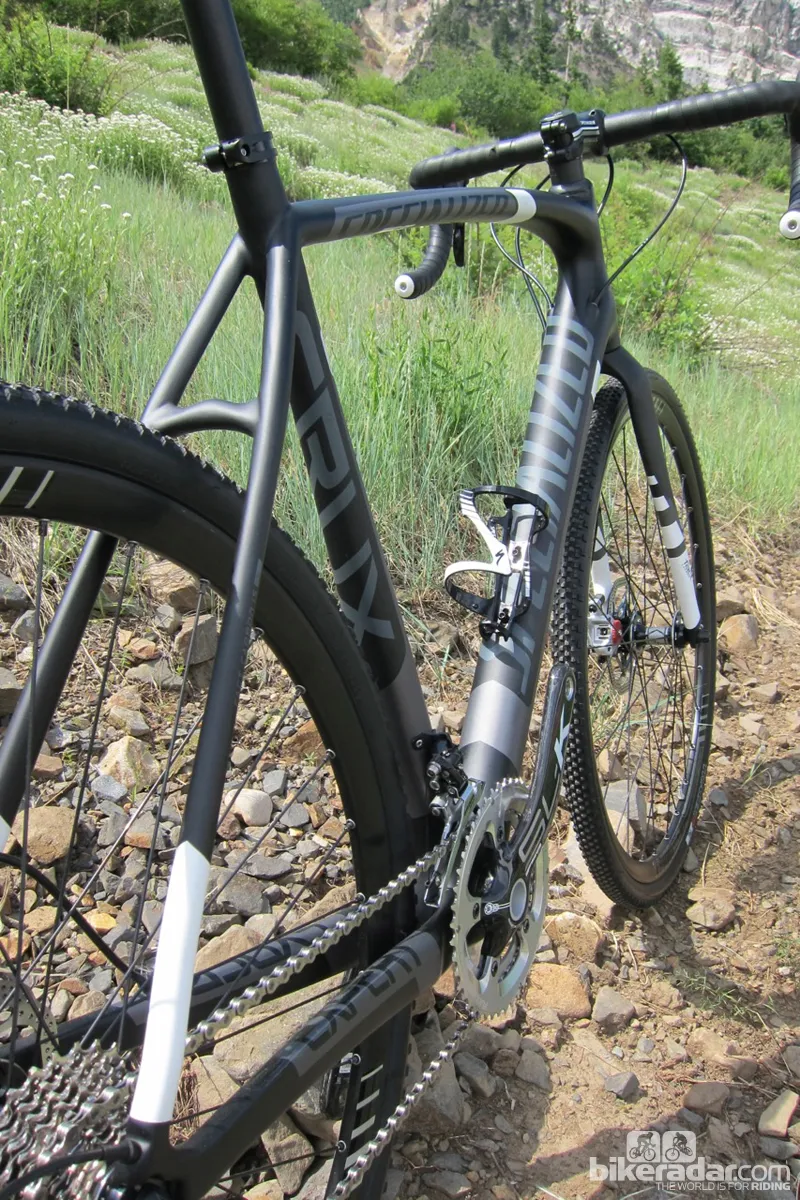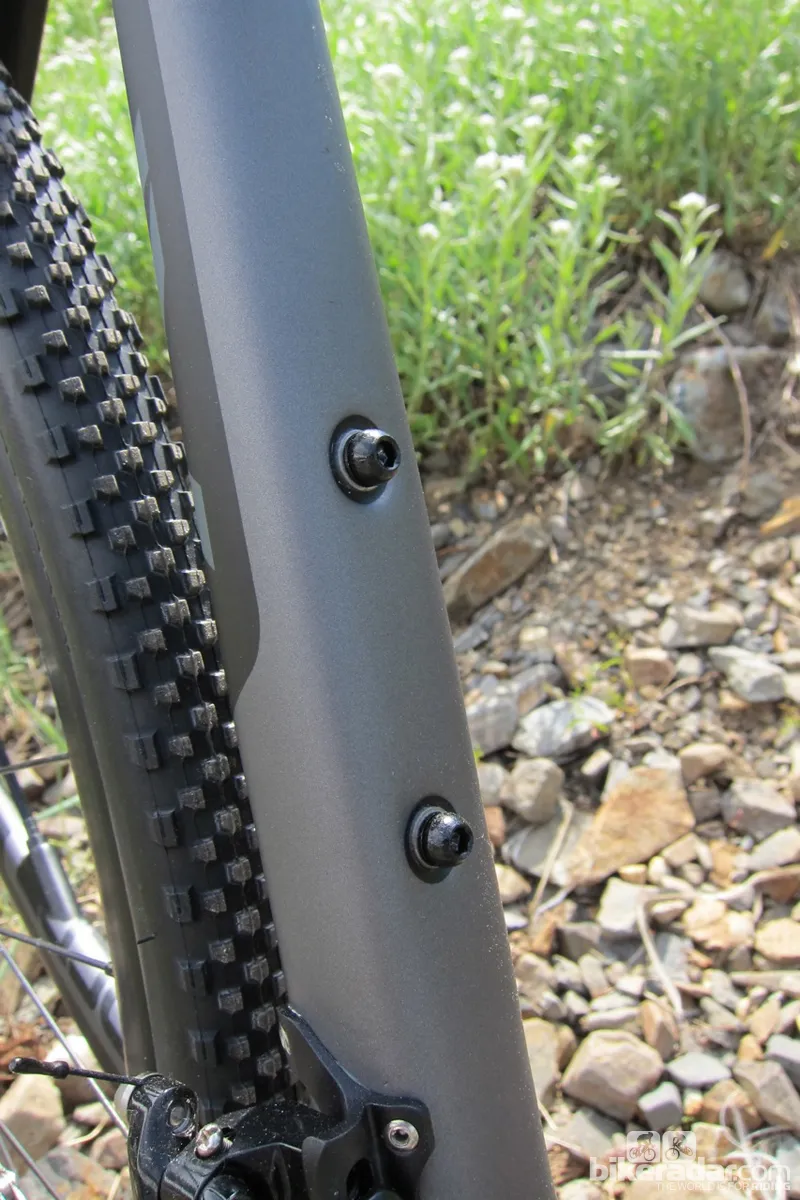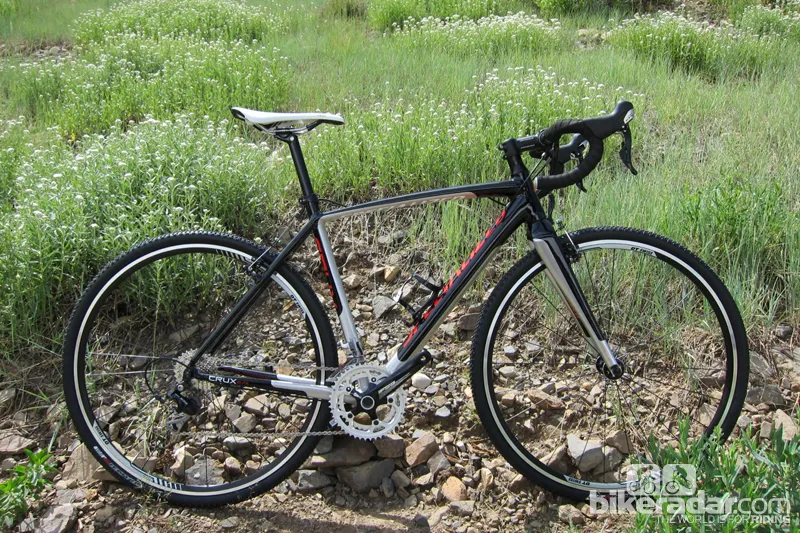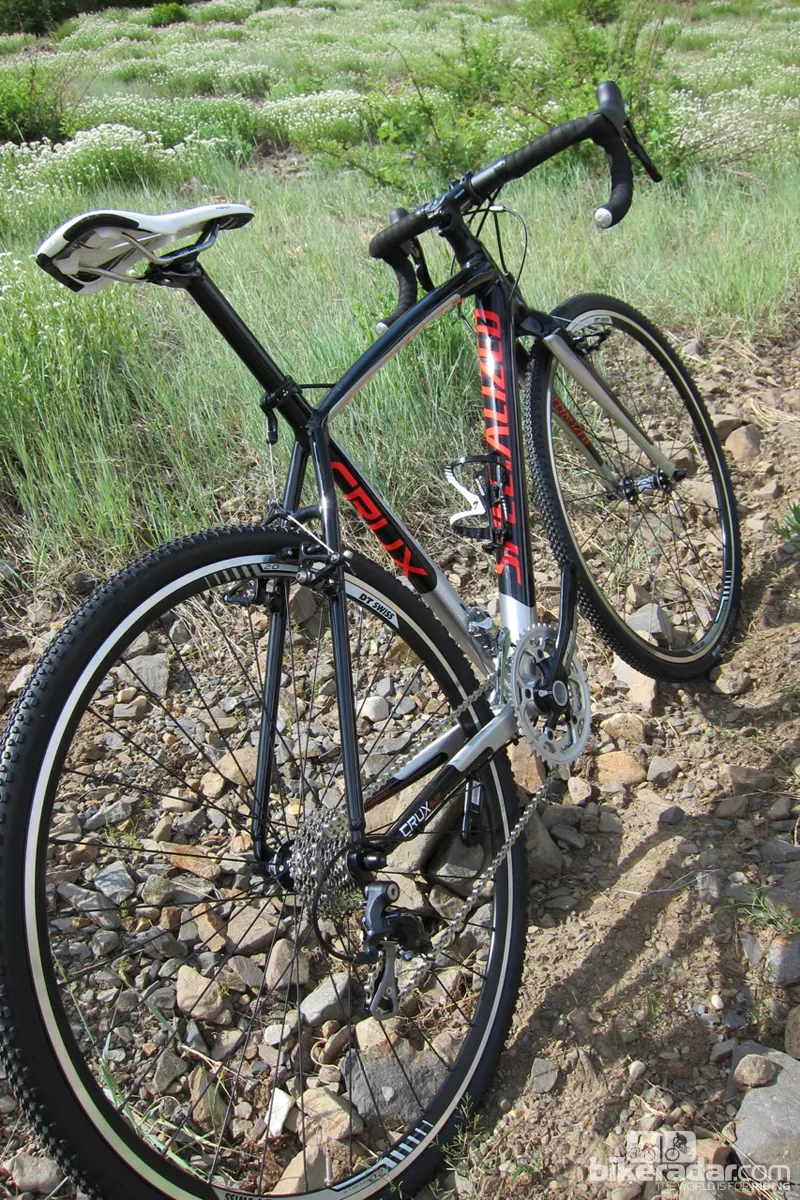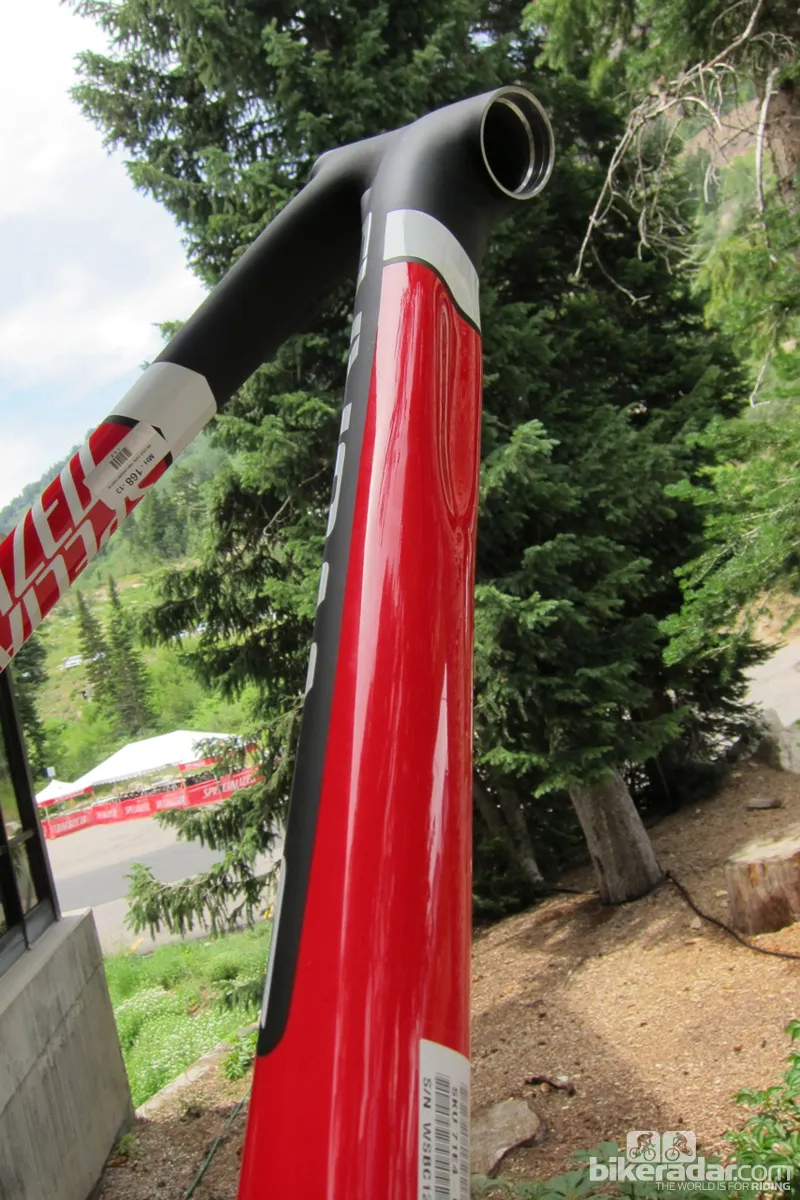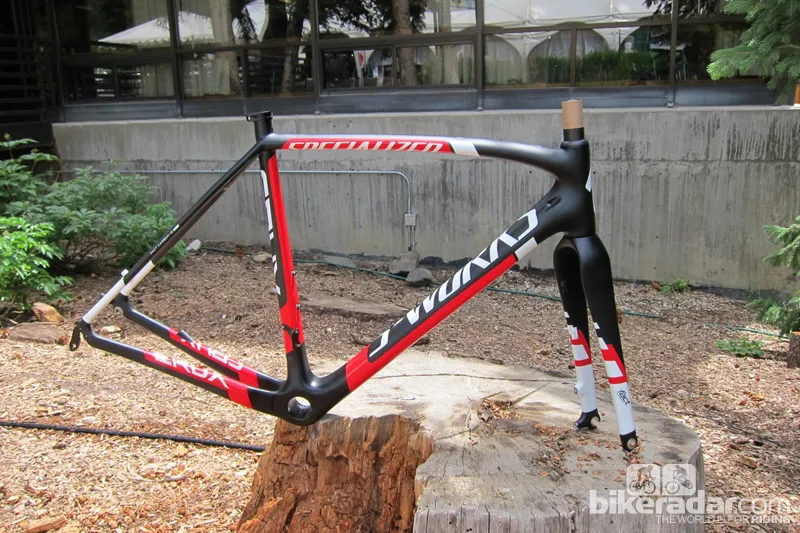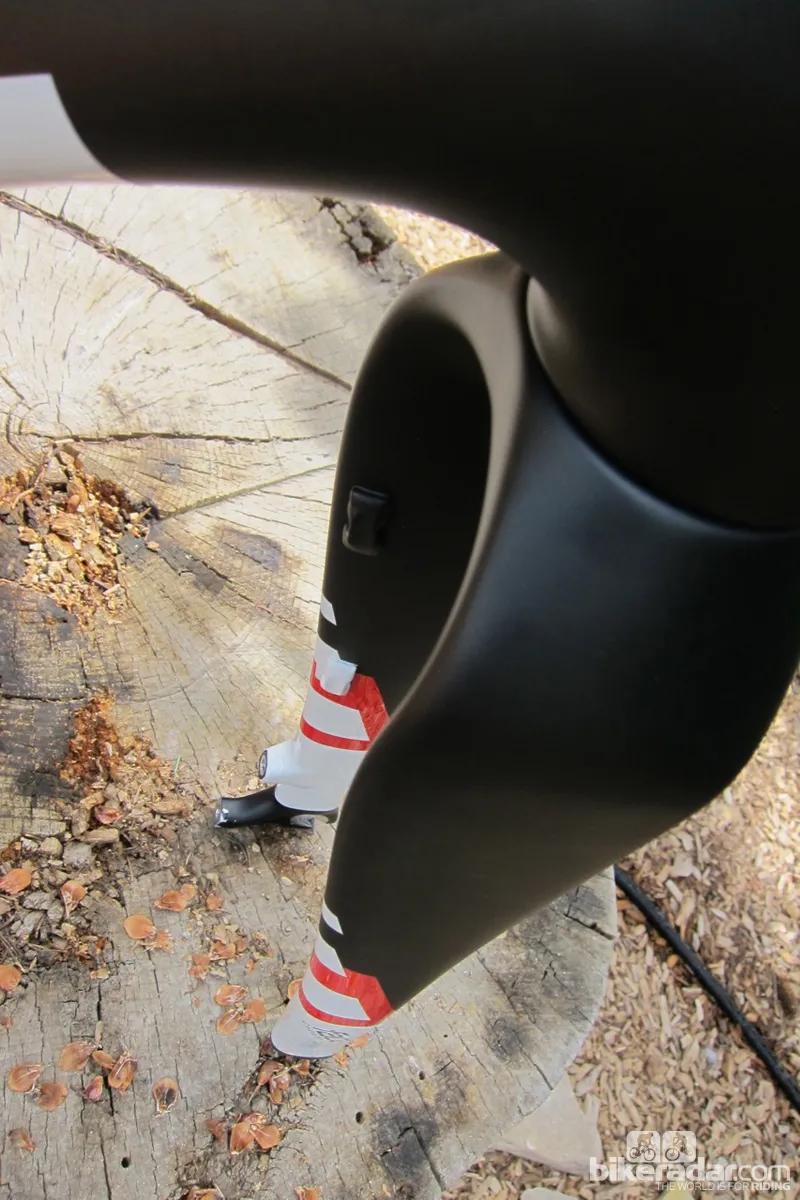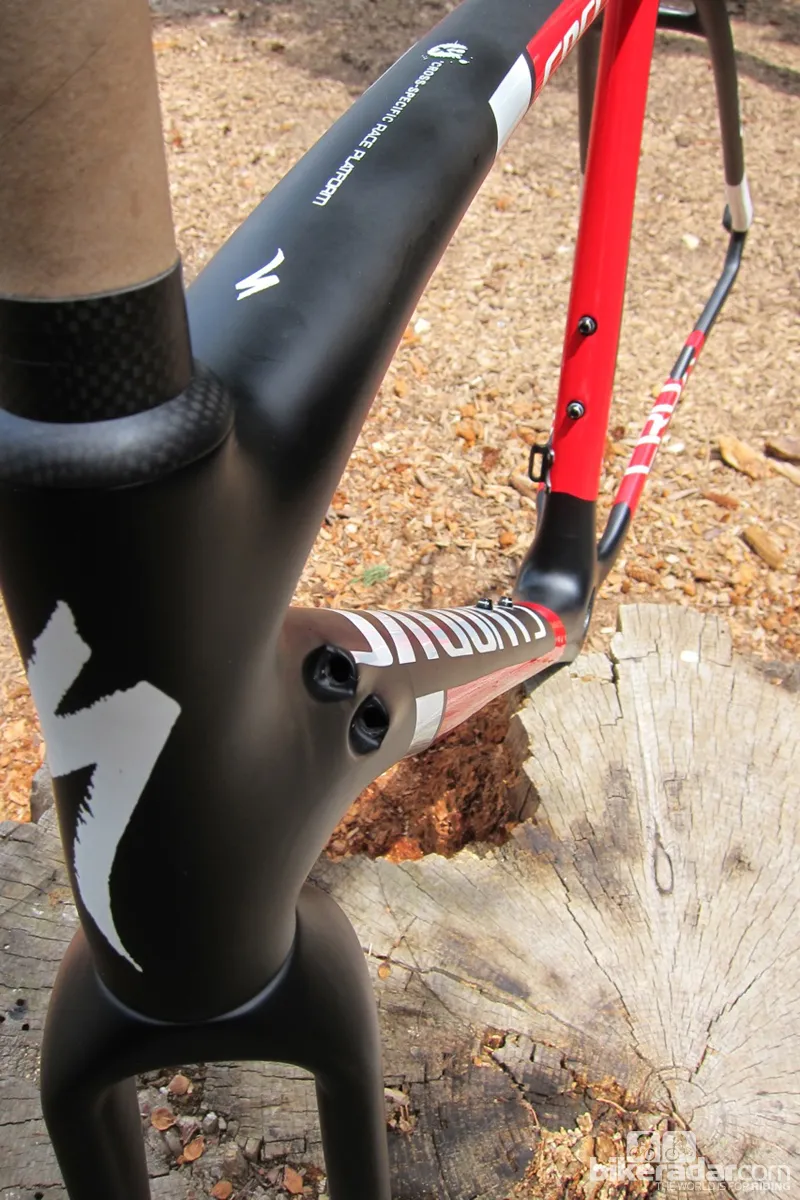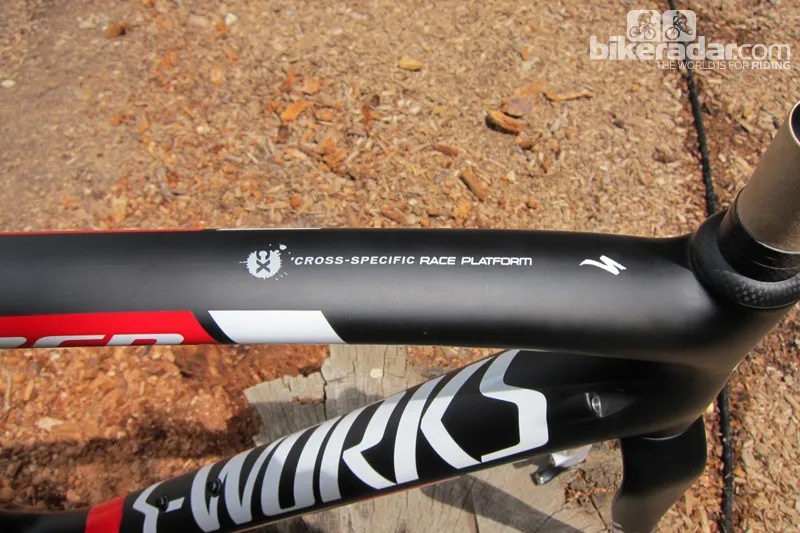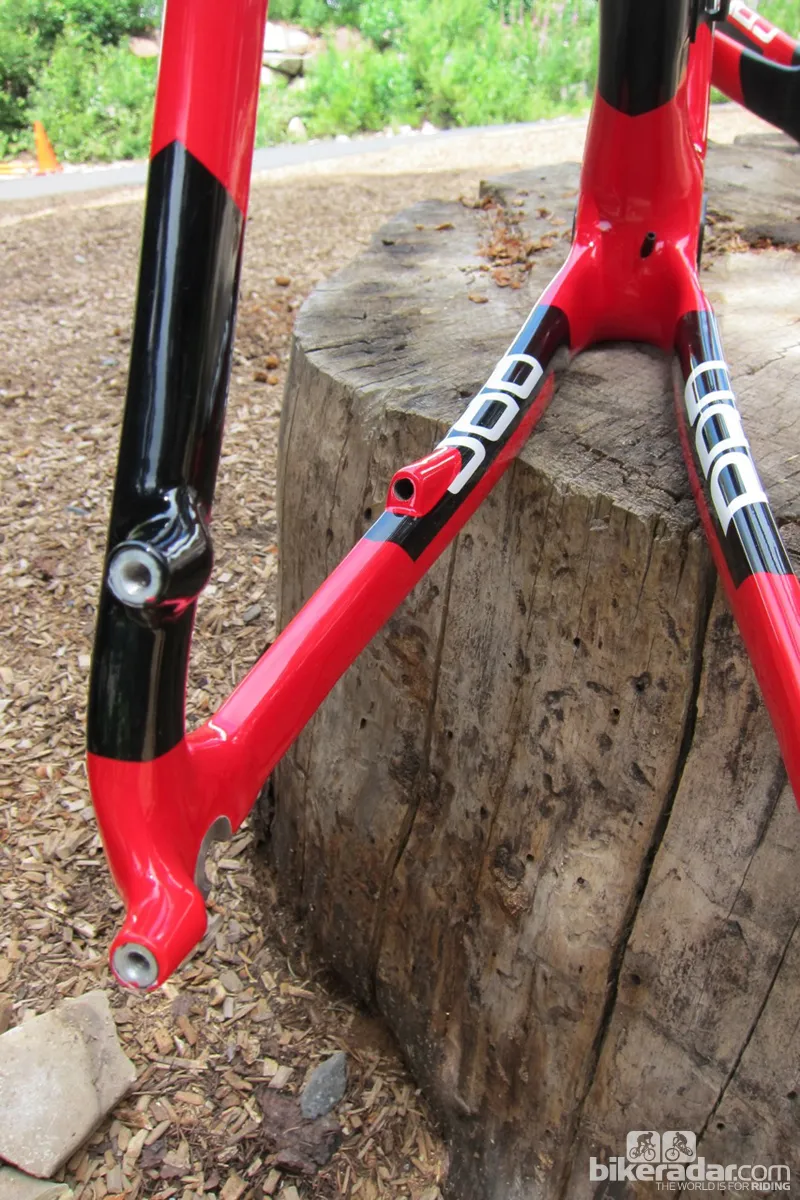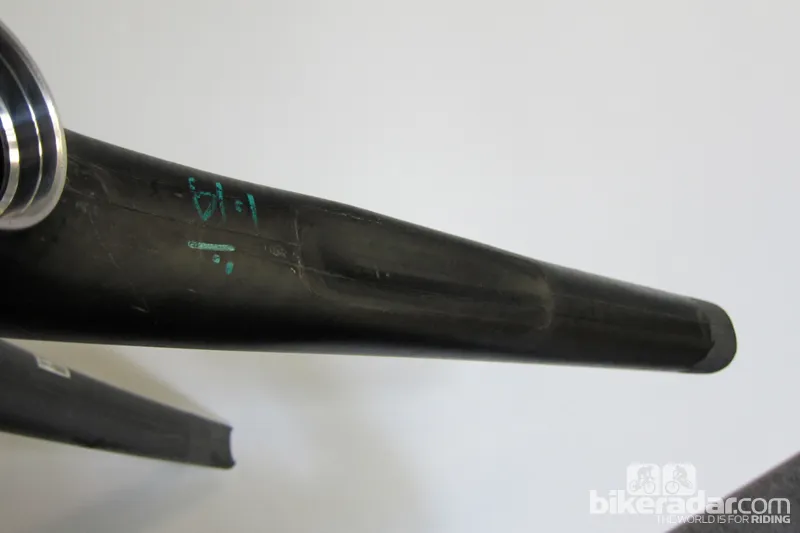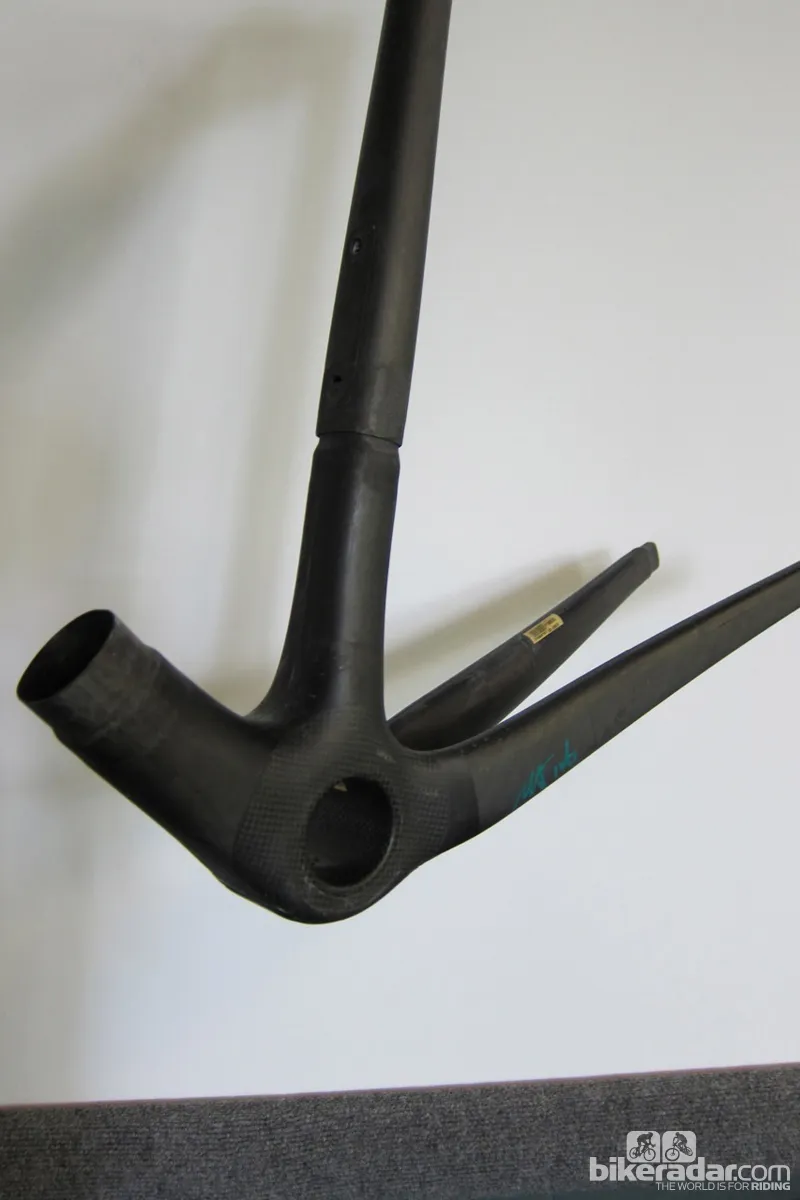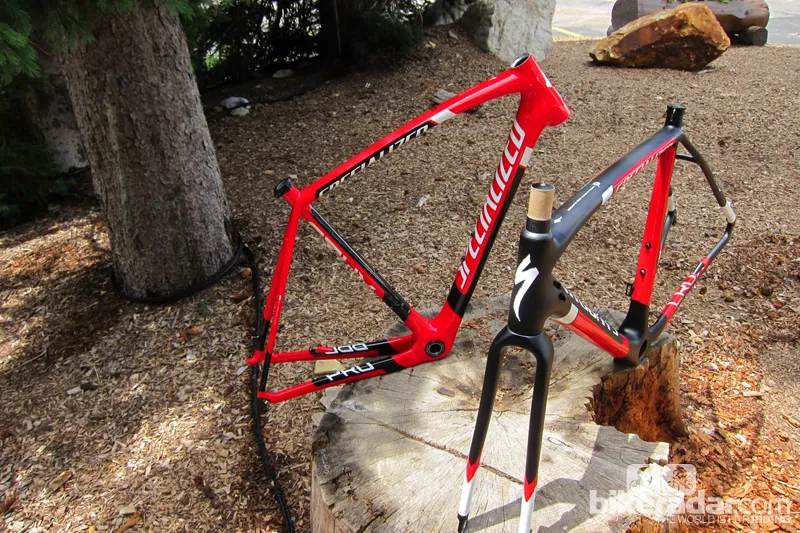Specialized had a carbon Crux in the line last year, but it was simply a rebadged carbon Tricross, Specialized’s older do-it-all ‘freeroad’ cyclo-cross rig. As it turned out, most of the brand’s pro racers opted to race the more contemporary and arguably more advanced — but heavier — aluminum Crux models last year.
Simply labeling that older bike as new proved was a false start for the carbon Crux, however, the patient work done by Specialized engineers and testers may well knock it out of the park with the launch of a legitimate carbon Crux for the coming season.
Over the course of the last two seasons Todd Wells, Ned Overend and the Cal Giant team have helped develop and race the E5 aluminum Crux over the last two seasons. In essence those bikes served as the test mules for Specialized to prove their unique geometry, which is marked by a low bottom bracket when compared to European bikes.
And it’s now with their proven, contemporary, American geometry that Specialized have gone all-in on their Crux cyclo-cross line, which will include both cantilever and disc brake options in carbon and aluminum all the way from 990g S-Works framesets down to entry level E5 aluminum models. In total if you count each of the different frame configurations — including two carbon S-Works frames (canti and disc), two Expert level carbon frames (canti and disc), and two E5 aluminum frames — which all come in seven sizes, Specialized’s commitment is apparent. They’ve built a cyclo-cross line that depends on 42 different frames for 2013, which is one of the most extensive lines available for the coming season.
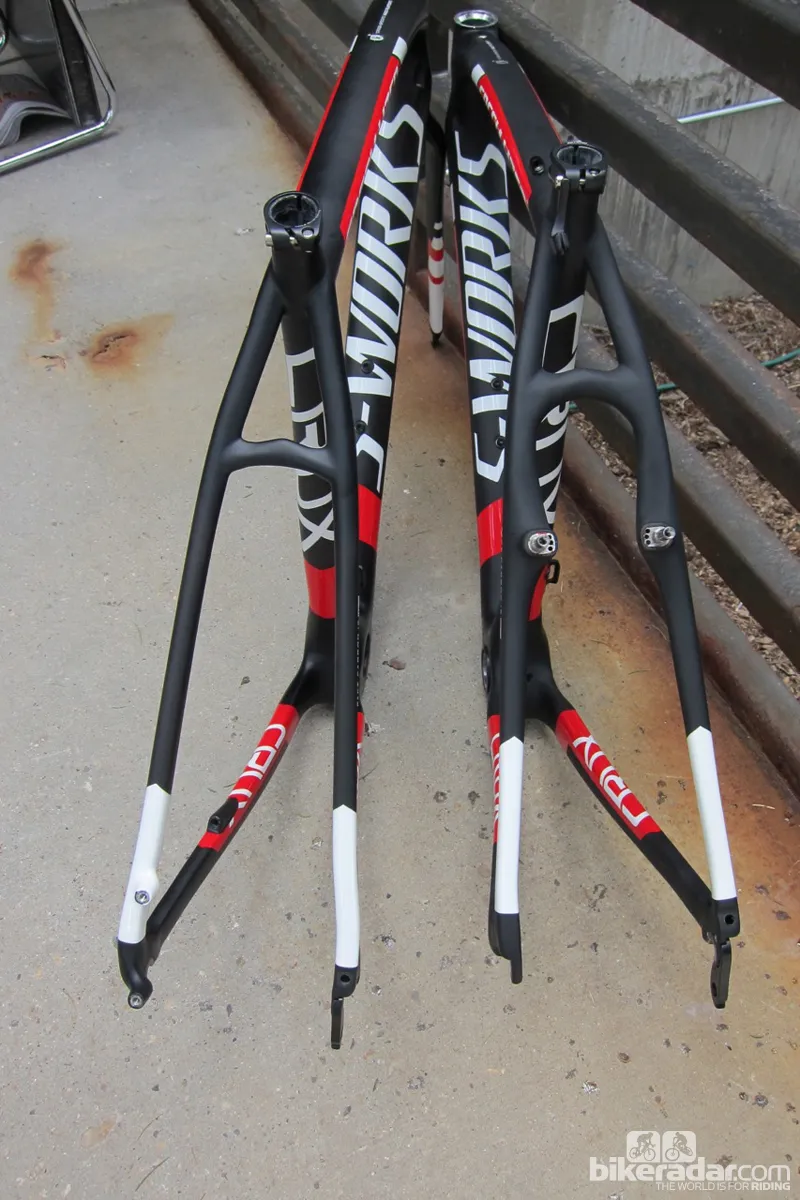
S-Works Crux frames in two flavors: disc or canti
Carbon Crux: ‘a Tarmac for the dirt’
Specialized say they sought to create a Tarmac for the dirt with the carbon Crux. Their athletes wanted it to be lighter, stiffer and faster. So using the geometry those athletes have helped prove, Specialized built four new FACT IS carbon frames for cantilever and disc brakes. “We’ve taken everything that we knew from the Tarmac — from the construction of how the tubes go together, the tube molding, the tube shaping, and that optimized blend of weight and stiffness — and brought that over from the Tarmac to the Crux,” said Luc Callahan, Specialized’s road engineering manager. “So you’ll notice the hyperbolic head tube here in the front as well as very similar tube shapes that lend themselves to the light weight.”
The two S-Works models utilize Specialized’s FACT 11r carbon, while the Expert models use the more economical 10r fibers. Mark Cote, Specialized’s aero and tri manager, says the difference is roughly 100g, with the S-Works model claimed at 990g for a 56cm, and the Expert model coming in below 1,100g.
The frames share a number of things: the same front triangle, which use a Tarmac-style ‘hyperbolic’ 1-1/8in to 1-3/8in tapered head tube, Specialized’s oversized (PF30) bottom bracket, fully internal cable routing, recessed water bottle bosses with decals to cover them for racing, flattened top tubes and integrated ‘Love Handle’ down tube grips. But the rear ends of the cantilever and disc models are completely different.
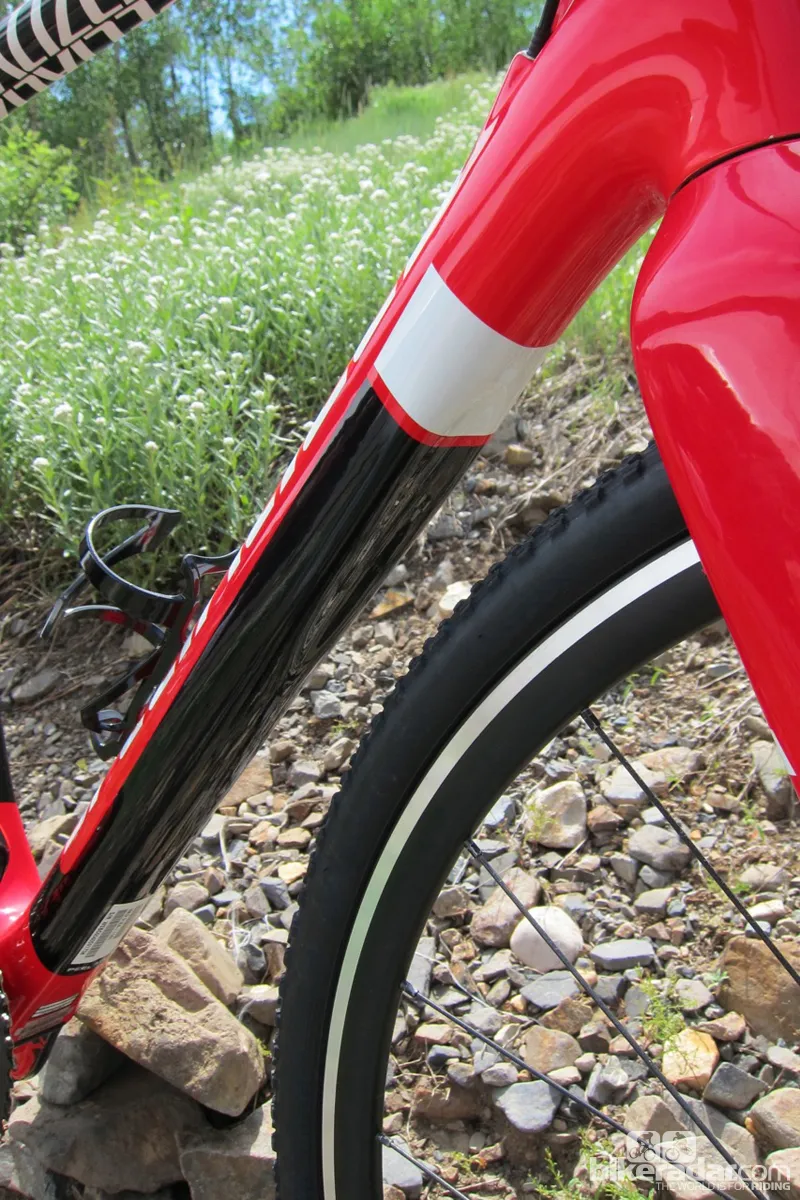
The 'Love Handle' grip is an indentation in the down tube for better grip when things get mucky
Both carbon frames will be available in cantilever or disc options. Callahan said that the disc frame actually betters two performance metrics when compared to the cantilever version. He says the disc frame is actually lighter — by around 40g — due to the reinforcement required on the seat stays required to support the cantilever brakes, and that by removing that reinforcement on the disc model, it actually damps vibration more effectively for a better ride.
The lower half of the rear end is also Tarmac inspired. Crux relies on a one-piece asymmetric chain stay and bottom bracket assembly, which balance the want of short stays with mud clearance at the bottom bracket.
The forks are new too.
“While it may look similar to the carbon fork we used on the alloy Crux last year, this uses a different bearing size,” said Callahan. “We felt that 1-1/2in was too big for this application; we wanted to keep things a bit tighter and a bit lighter. There are disc and canti versions and they’re really designed for the brake application. The fork, weighs about 500g which is very light for a ’cross bike especially considering the load that goes into it.”
Initially, Specialized will sell the S-Works models as framesets only. The Expert level (FACT 10r) carbon frames will be available in a three model-range, which staggers component level and brake type. For example, the Crux Pro Carbon is cantilever equipped with a SRAM Red group, whereas the Crux Expert Carbon Disc features a mostly Force group, and the base carbon model, the Crux Comp, goes back to canti brakes, sporting a Shimano 105 package.
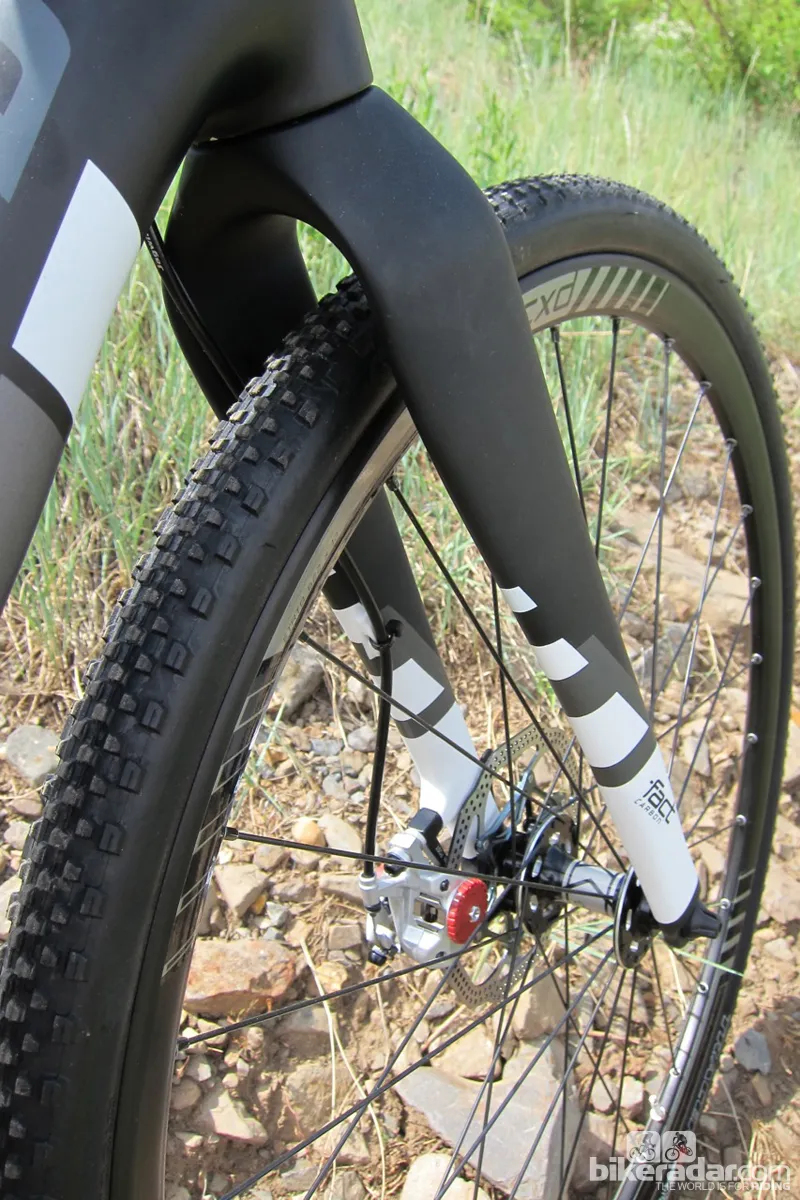
Bring on the mud: Specialized commits to disc brakes as an option across the line
